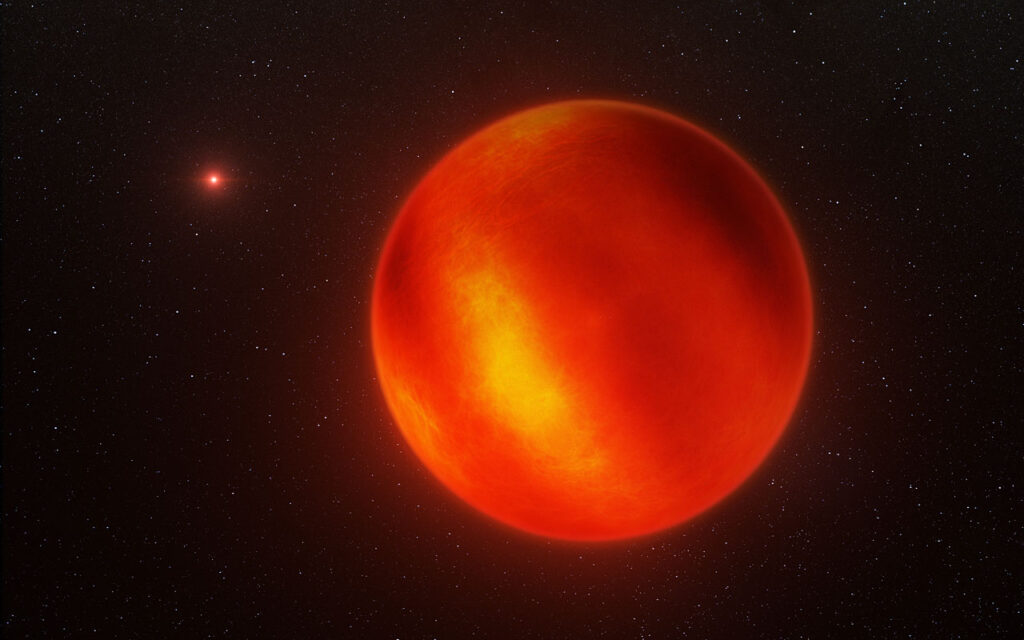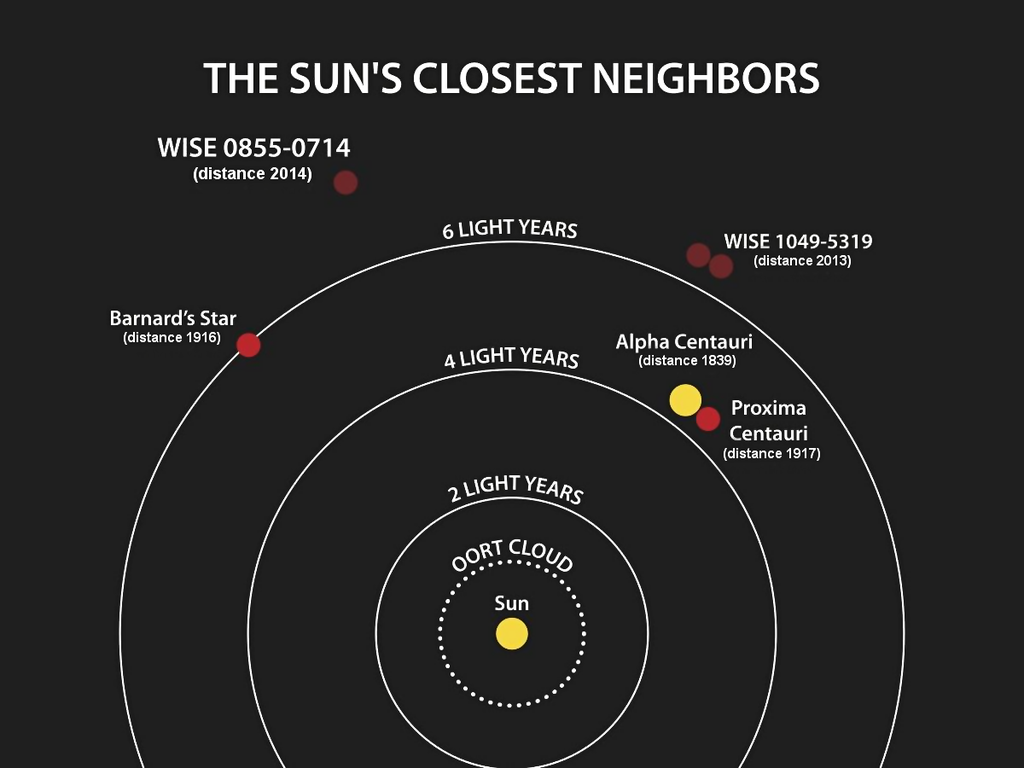On March 11, 2013, the operating team of the WISE infrared telescope announced that it had discovered the third most distant star system from us. Luhman 16 is a pair of brown dwarfs located 6.5 light years from the Sun. Let’s remember how it happened and why this discovery could not be made earlier.

The nearest stars to us
The question of which stars are closest to us may seem simple enough. However, humanity received a more or less accurate answer to it only in the 20th century. For a long time, nothing was known about the distances to other luminaries.
Only at the turn of the 19th and 20th centuries, people realized that most of the stars around us are so small and dim that we practically cannot see them, despite the fact that they are located much closer than the brightest decorations of the night sky known since antiquity.

Such stars are called red dwarfs. Barnard’s Star, Proxima Centauri, Wolf 359, and Lalande 21185 are all luminaries of that sort that are closer to us than Sirius, which is 8.5 light years away.
Brown dwarfs
It is clear that if there are objects smaller in size and luminosity than a red dwarf, then we will not see them, even if they are close enough. And the theory predicted that such objects could be real. They were called brown dwarfs.
The only problem was that brown dwarfs are very hard to spot. In most cases, the smaller the mass of the star, the lower the temperature of its surface, and the colder the star, the stronger the peak of its radiation shifts to the red region of the spectrum. For brown dwarfs, it already lies outside the visible range.

Therefore, ground-based telescopes operating in the visible range could not detect them for a long time (This happened only in 1995). However, scientists had long been sure that atmospheric obstructions prevented us from seeing not only a bunch of brown dwarfs, but also other objects such as comets and large asteroids beyond the orbit of Neptune. Therefore, they decided to take the infrared telescope outside the Earth’s atmosphere.
WISE
The project, later named the Wide-Field Infrared Survey Explorer (WISE), was proposed in 1999. It envisaged the creation of a not very large, but extremely sensitive space telescope. To achieve the highest possible sensitivity, it was equipped with a huge tank of liquid hydrogen, which was supposed to cool the device to extremely low temperatures.

It took 10 years to go through all the stages — from the idea to the finished device. WISE was launched into space on December 14, 2009. The basic principle of its operation was simple: it tried to photograph the entire sky several times while it still had cooler onboard. And only then scientists had to start analyzing this incredible number of pictures in search of objects unknown to science.
WISE completed its survey of the sky in January 2011, after which scientists began to work. One of the groups was led by Kevin Luhman, a professor at the University of Pennsylvania. And it was among the objects he found that an interesting and very close to us system of brown dwarfs was discovered.
It was announced on March 11, 2013 that the object Luhman 16 is a pair of brown dwarfs at a distance of 6,588 light years from us. This system became the third lest distant from the Sun, displacing the red dwarf Wolf 359 from this position.
Interestingly, after that, Kevin Luhmann continued his work with the WISE data and discovered another brown dwarf very close to us. This time it was a lonely, extremely faint object, WISE 0855-0714, which lies at 7.18 light years being the fourth most distant object from us.

Luhman 16 system
As for the Luhman 16 system, not much is known about it though ten years have passed since its discovery. The larger of the two dwarfs, Luhman 16A, has a mass of 3.2% that of the Sun, or 33 times the mass of Jupiter. At the same time, the radius of this star is estimated to be only 85% of that of Jupiter, that is, it is a sufficiently dense object.
With a surface temperature of 1,350 K (about 1,080°C), Luhman 16A belongs to the spectral class L. It is quite possible that it shines not with residual light, but with thermonuclear reactions that are still going on inside it.
Even less is known about Luhman 16V. Its mass is estimated to be 28.6 times that of Jupiter, but the radius is difficult to determine due to the fact that this object constantly changes its brightness. Apparently, its surface temperature reaches 1200 K and it belongs to the “medium” class T.
Observations show that both brown dwarfs orbit each other in a slightly elongated orbit with a semi-major axis of 3.5 AU and a period of 27.5 Earth years. This can be compared to the period of rotation of Saturn around the Sun.
Spectroscopic studies show that brown dwarfs are rich in such alkali metals as potassium and sodium. It is difficult to estimate their age. The maximum estimate is 3-4.5 billion years. The minimum is 120 million years.
Studies carried out in 2022 showed that Luhman 16 is part of a group of stars that move through space at almost the same speed and in the same direction. This is in good agreement with other studies showing that brown dwarfs are born together with normal stars.
If this study is correct, the age of the Luhman 16 system is approximately 510 million years. It is much younger than the Sun — the time of its existence can be compared to the age of multicellular life on Earth.
A possible planetary system
A few months after its discovery, in December 2013, scientists announced that the Luhman 16 system had motion irregularities detected by astrometric methods. This could mean the presence of a third invisible body — a planet, in other words.
According to experts’ calculations, the planet has a mass from several to 30 Jupiter masses and revolves around one of the brown dwarfs. However, further studies proved the absence of bodies next to Luhman 16 — first, the bodies larger than Jupiter were excluded, and then the ones comparable to Neptune.
However, the question of whether life would be possible on an Earth-sized planet orbiting one of the brown dwarfs remains intriguing. There is still no unequivocal answer to it, because very few planets orbiting brown dwarfs have been discovered.

